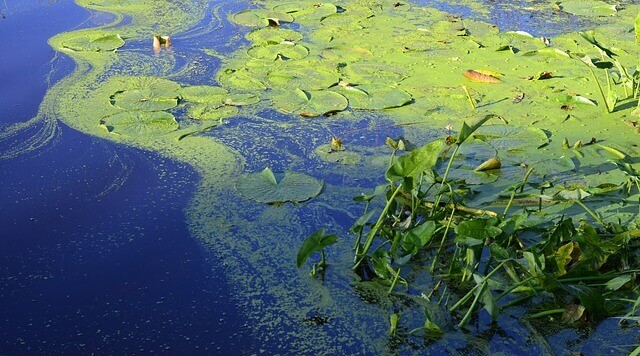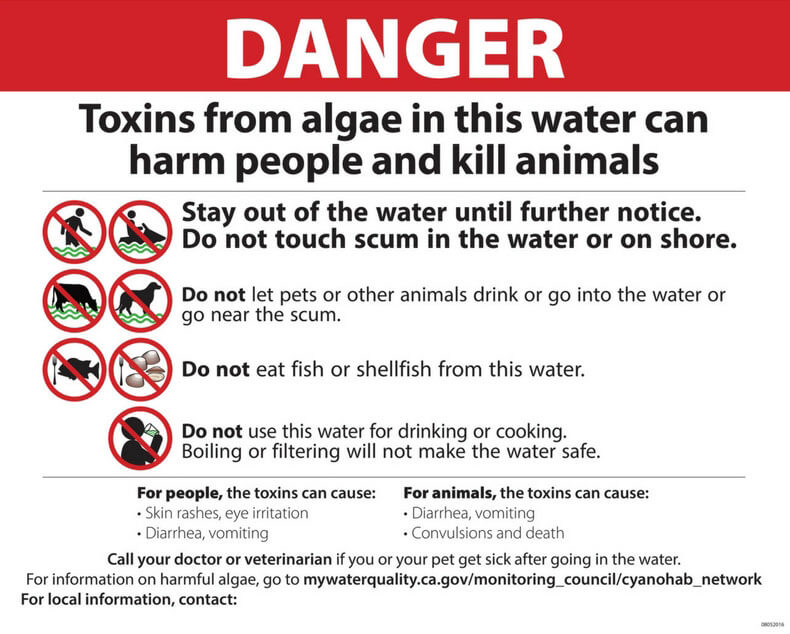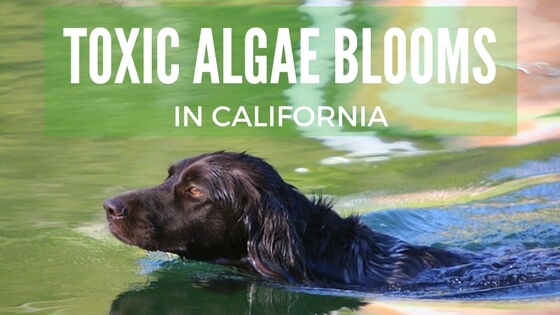
By Gabrielle Feldman
According to the California Department of Public Health, toxic blue-green algae blooms (known as cyanobacteria) are increasing in number, frequency, and severity all throughout the state. In conjunction, they are seeing deaths in dogs and livestock that are linked to blue-green algae toxins.
What Exactly Is Blue-Green Algae?
This type of algae is a non-pathogenic photosynthetic bacteria grows in outdoor bodies of water and they produce different types of toxins. In warm weather conditions, this algae grows rapidly and form large blooms.

How is my Dog Exposed to Blue-Green Algae Toxins?
- If they come into contact with any infected body of water including lakes, rivers, ponds, and streams. Unfortunately, dogs are attracted to the algae, they drink the toxic water and eat the algae material. Dogs will also eat the algae off of their paws after swimming or walking through infected water.
- Consuming water and algae from infected residential pools and/or decorative ponds.
- Ingesting blue-green algae supplements.
Signs Your Dog Has Ingested Toxic Algae:
- Vomiting
- Diarrhea
- Lethargic
- Excessive thirst
- Increased urination
- Seizures
- Respiratory arrest
- Rash and/or hives

Steps You Can Take to Protect Your Dog:
1. Bring your own, clean water for you and your dog while you’re out walking. Do not allow your dog to drink from any water body that has algae blooms
2. Keep your dog on a leash while walking. A dog off leash may come into contact with infected water while running around.
If you suspect your pet has come into contact with this species of algae, there is treatment available. It is very important that your pet is seen by a veterinarian as soon as possible.
For any other questions, comments, or concerns, please do not hesitate to contact us, here.
All information from this article can be found at California Cyanobacteria and Harmful Algal Bloom Network.
Related Articles:
- The Dangers of Foxtails and Your Dog
- Watch Your Step This Summer
- Is the Rattlesnake Vaccine Right for Your Dog?

